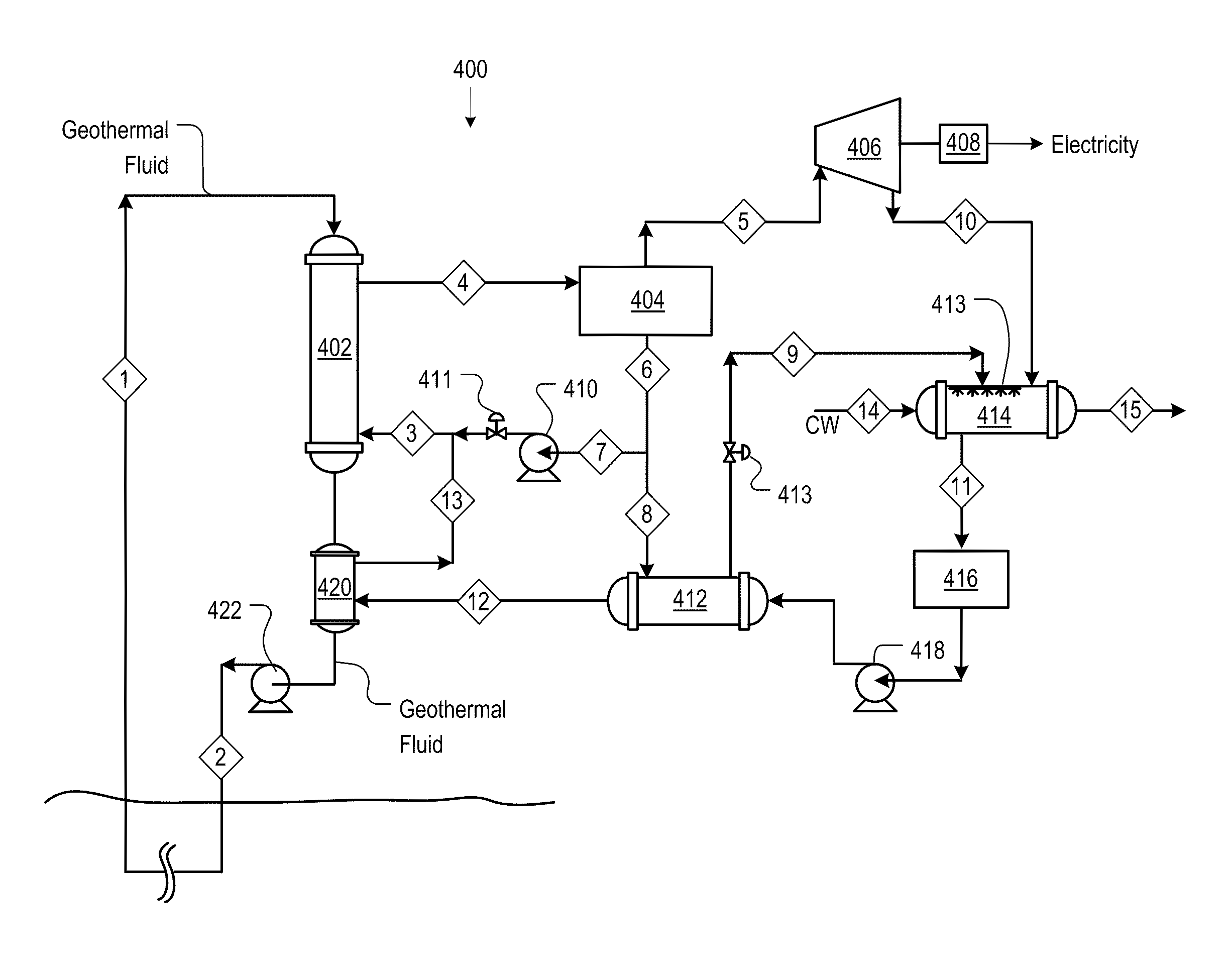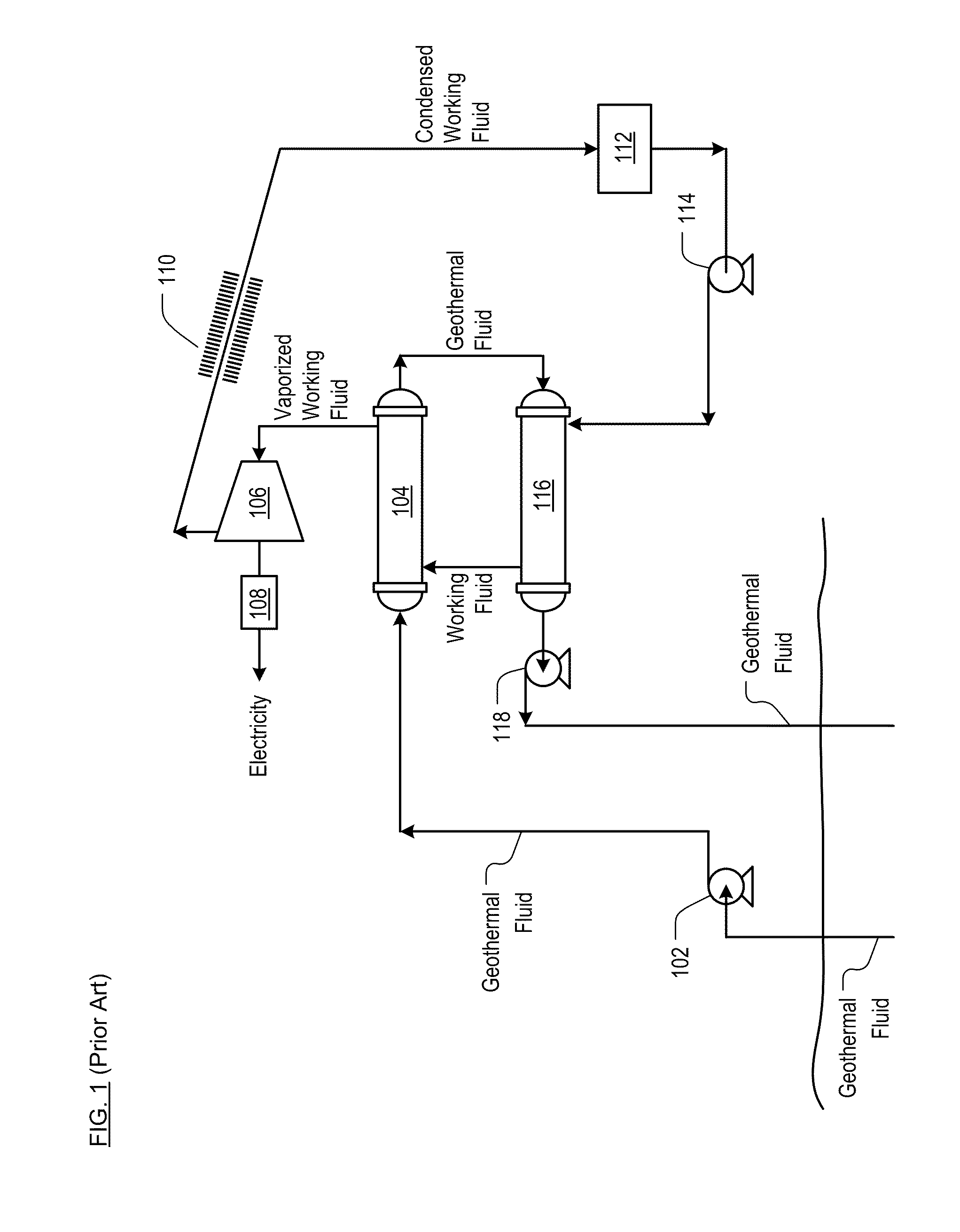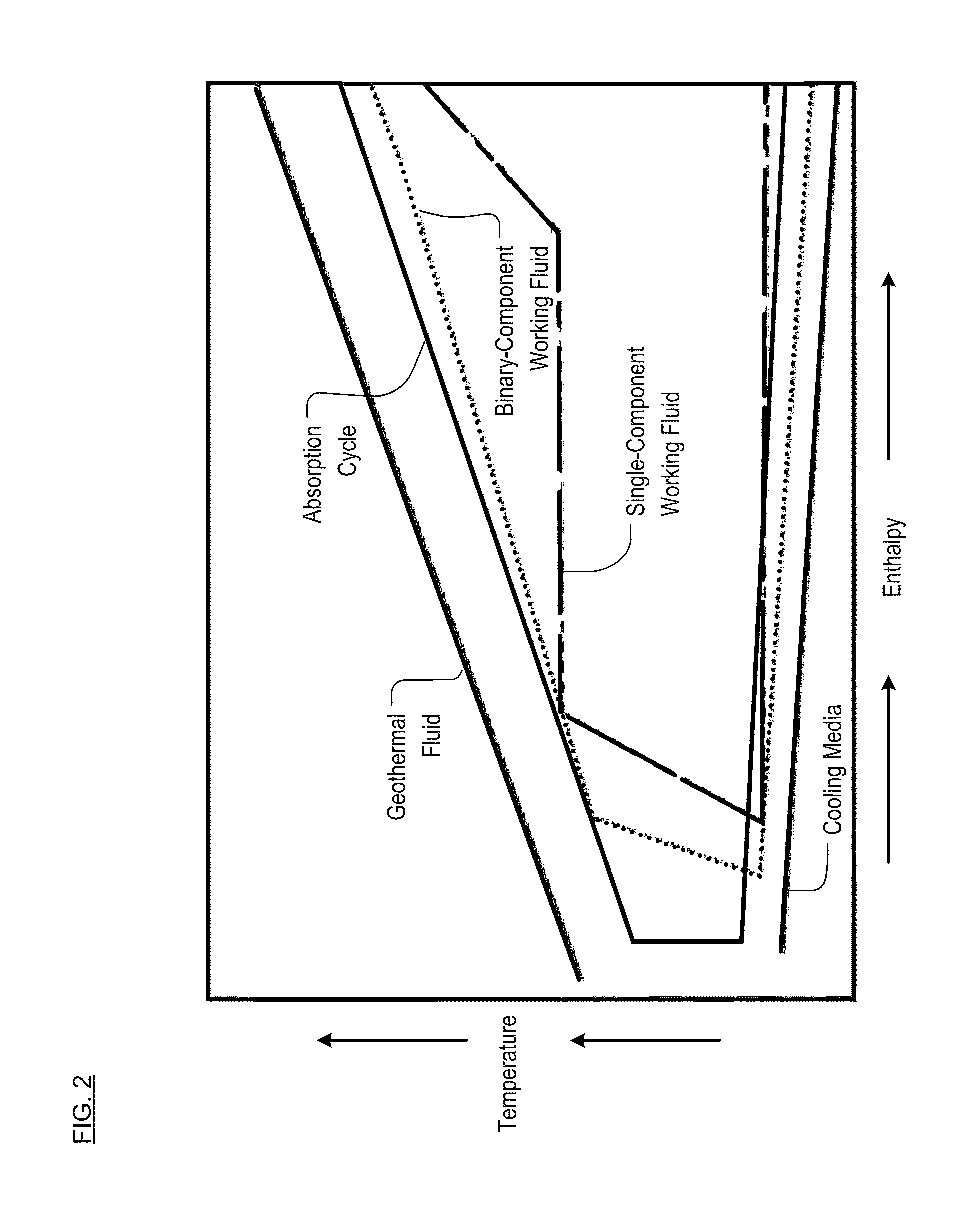Working-fluid power system for low-temperature rankine cycles
a technology of working fluid and rankine cycle, which is applied in the direction of machines/engines, sea energy generation, steam engine plants, etc., can solve the problems of affecting the equilibrium conditions of vapor/liquid, reducing the effective heat transfer coefficient, and reducing thermal performan
- Summary
- Abstract
- Description
- Claims
- Application Information
AI Technical Summary
Benefits of technology
Problems solved by technology
Method used
Image
Examples
example
[0077]Table 1 below depicts process stream data for a variety of state points throughout system 400 based on an isobutane / hexane working fluid. For the purposes of this example, pressure drop in equipment and piping is not considered. The data appearing in Table 1 was generating by NIST REPPROP software, version 8. An arbitrary feed rate of 100 kilograms / second was assumed.
[0078]
TABLE 1Process Stream Data for System 400for iso-butane / hexane Working FluidMassTempPressFlowVapor MassFraction ofStreamFractionIso-butane1962663575551000.000.574885551000.750.57588555751.000.68632555250.000.24788555100.000.24888555150.000.24932269150.000.241049269751.000.681127269900.000.611236555900.000.611357555900.000.6114211543
[0079]For this Example, the mass fraction of working fluid that is vaporized in vaporizer 402 is seventy five percent, which is between the preferred sixty to eighty percent.
[0080]In the Example, the split between split-feed 7 and spray-stream 8 is 40 percent of the mass flow appo...
PUM
 Login to View More
Login to View More Abstract
Description
Claims
Application Information
 Login to View More
Login to View More - R&D
- Intellectual Property
- Life Sciences
- Materials
- Tech Scout
- Unparalleled Data Quality
- Higher Quality Content
- 60% Fewer Hallucinations
Browse by: Latest US Patents, China's latest patents, Technical Efficacy Thesaurus, Application Domain, Technology Topic, Popular Technical Reports.
© 2025 PatSnap. All rights reserved.Legal|Privacy policy|Modern Slavery Act Transparency Statement|Sitemap|About US| Contact US: help@patsnap.com



